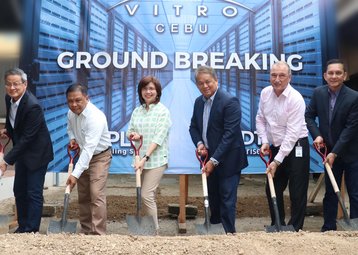The Philippine Long Distance Telephone Company (PLDT) has broken ground on its second data center on Cebu island to be used for colocation and cloud.
The company’s ninth facility overall, the building will be constructed next to its exisiting Mandaue City data center and is expected to be completed by the fourth quarter of 2017.
Growth in the Philippines
The four-floor ‘Vitro’ data center will have a minimum of 3,600 sq meters (38,750 sq ft) of floor area and a 700-rack capacity, adding to the total rack capacity of data centers in ePLDT’s network which will be 8,300 by the end of 2016.
“A little more than three years after its opening in 2012, the first Vitro in Cebu is now 100 percent utilized, a testament to the region’s dynamic business environment,” PLDT EVP and ePLDT CEO Eric R. Alberto said.
Cebu is in the Central Visayas region of the Philippines archipelago, roughly in the center of the collection of 7,000 islands that make up the nation.
The City of Mandaue, part of the Cebu Metropolitan area, is classified as a first income class highly urbanized city, which means the city government’s legislature is not subject to review by the province’s Sangguniang Panlalawigan (Provincial Board).
As an independent city, the President of the Philippines has direct supervising authority over the city government, with Mandaue currently feeling the affects of Rodrigo Duterte’s brutal and controversial crackdown on drug dealers.
A growing trade city, Mandaue has been limited by its land area of just 30.64 square kilometers, causing the government to invest in expensive and large scale land reclamation projects.
In 2013, the Sultan900 Consortium was awarded a 9 billion peso ($189m) contract to reclaim 131 hectares of foreshore and submerged lands in Cansaga Bay.
City chief executive secretary Elaine Bathan told Sun Star: “While we admit that size may limit us, there are works for additional reclamation projects. The moment we are able to push through and expand reclamation projects, we could create economic processing zones.”

